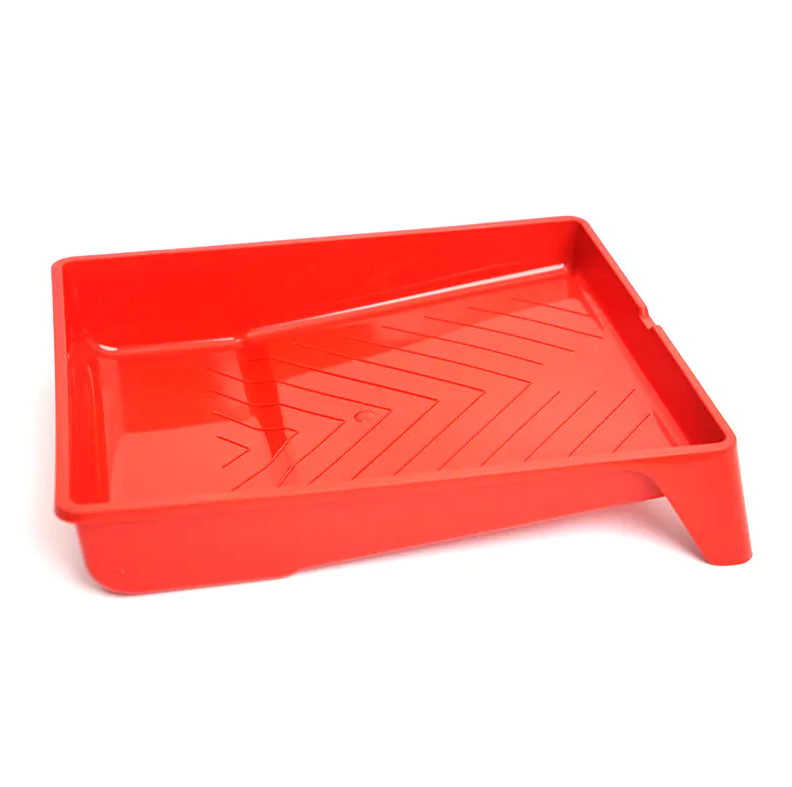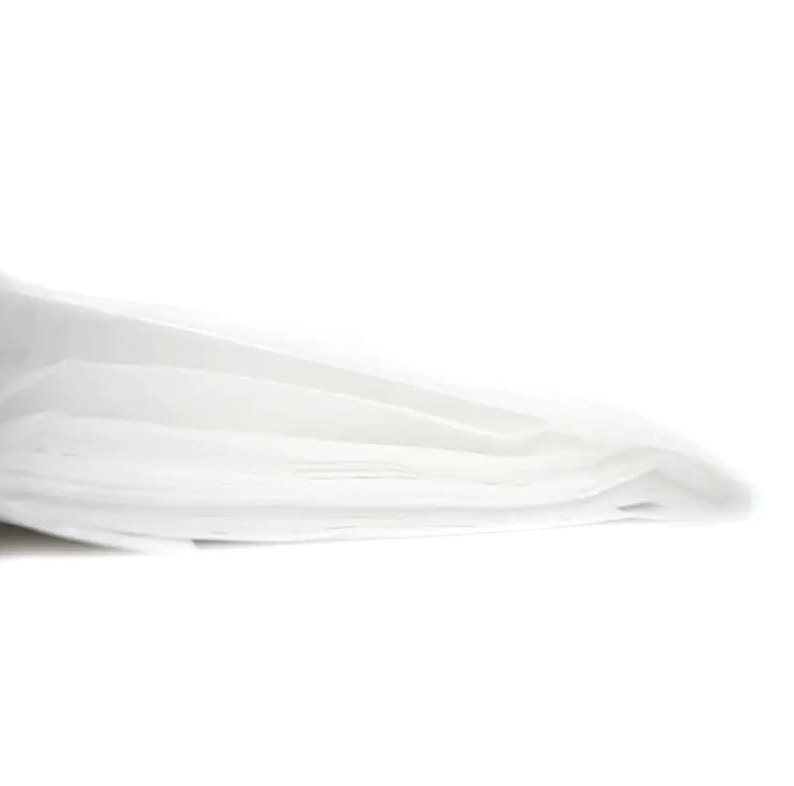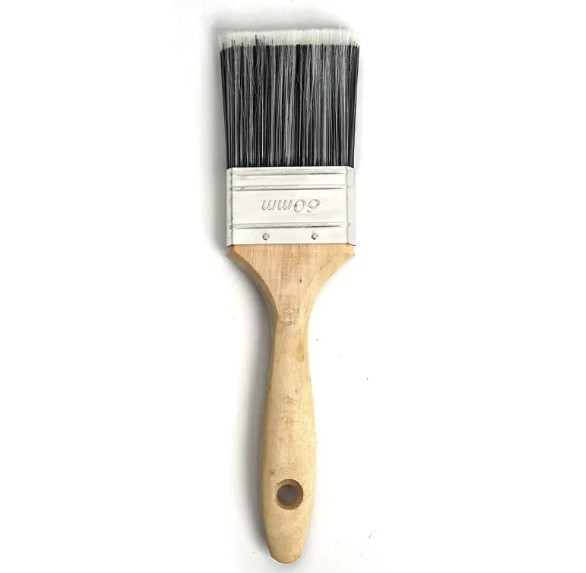Paint Brush Wooden Handle materials are primarily categorized into two types: natural and synthetic. Natural hair typically includes pig, horse, and goat hair. These materials offer excellent elasticity and paint absorption, making them suitable for oil-based paints and wood finishes.
Natural hair's excellent elasticity allows it to withstand application requiring a certain amount of force and flexibility. It also has strong paint absorption, making it suitable for applying thicker paints, such as wood, furniture, and fine grain finishes. However, natural hair also has some drawbacks, such as susceptibility to moisture and deformation, a relatively short lifespan, and a higher price and maintenance cost.
In contrast, synthetic materials such as nylon, polyester, and polypropylene offer excellent durability and stability. Bristles made from these materials are durable, resist deformation, and have a long lifespan. They also resist shedding and fading, making them suitable for long-term use.
They are particularly well-suited for applications such as water-based, latex, and clear paints. However, artificial materials have poor elasticity and are unsuitable for painting applications requiring high flexibility. While relatively expensive, their cost-effectiveness is excellent over the long term.
Natural hair and artificial materials each have their own applications and advantages and disadvantages. Choosing the right brush should be based on specific application requirements, paint type, and application environment to achieve the best possible results.
Hog bristle brushes and nylon brushes are two common types of bristles, differing significantly in their application scenarios and suitability.
1. Hog bristle brushes
Hog bristle brushes are typically made from natural hair, such as pig hair and horse hair, and possess excellent elasticity and paint absorption. These brushes are suitable for applications requiring elasticity and strong paint absorption, such as oil-based paint, wood finishes, and wood grain effect coatings.
The elasticity of pig bristle brushes allows them to handle applications requiring a certain amount of force and flexibility, making them suitable for delicate applications such as fine woodwork and furniture painting. However, the disadvantages of pig bristle brushes are their susceptibility to moisture and deformation, a relatively short lifespan, and a relatively high price and maintenance costs.
2. Nylon Brushes
Nylon brushes are made from synthetic materials such as nylon and polyester, offering excellent durability and stability. Nylon brushes are durable, resist deformation, and have a long service life, making them suitable for applications such as water-based paint, latex paint, and clear paint.
Nylon brushes have a lower elasticity and are not suitable for applications requiring high flexibility. However, their relatively high price makes them a good value for money over time. Nylon brushes are suitable for applications requiring high precision and long-term use, such as interior decoration and wall painting.
When choosing the bristle type for a wooden-handled paintbrush, you should make an appropriate choice based on the specific application requirements, paint type, application environment, and application precision. The following are detailed selection recommendations:
1. For high elasticity and strong paint absorption: Choose a natural bristle brush (such as pig bristle).
If the application requires high elasticity, paint absorption, and a certain degree of elasticity, such as applying oil-based paint, wood finishes, or delicate wood grain effects, a natural bristle brush (such as pig bristle) is the ideal choice.
Natural hair (such as pig hair and horse hair) has excellent elasticity and paint absorption capacity, allowing it to withstand applications requiring a certain amount of force and flexibility during painting, making it suitable for applications such as fine woodwork and furniture painting. However, the disadvantages of natural hair brushes are that they are susceptible to moisture and deformation, have a relatively short lifespan, and are relatively expensive and require relatively high maintenance.
2. For durability and ease of maintenance: Choose synthetic brushes (such as nylon).
If the application requires long-term use, high precision, and a brush that resists deformation and hair shedding, synthetic brushes (such as nylon and polyester) are more suitable. Synthetic brushes offer excellent durability and stability, a long lifespan, and resistance to deformation, making them suitable for applications such as water-based paint, latex paint, and clear paint.
Although synthetic brushes have a lower elasticity and are not suitable for painting applications requiring high flexibility, their relatively high price makes them a good value for money over time.
3. Choose according to application requirements: Select the appropriate bristle type based on the paint type, application environment, and application precision.
In actual application, the following factors should be considered when selecting a brush bristle type:
Paint type: Different paints, such as water-based paint, oil-based paint, and latex paint, have different requirements for brush bristles.
Application environment: Different environments, such as interior decoration, outdoor construction, and fine-finishing applications, have different requirements for brush bristle performance.
Application precision: Fine-finishing applications, large-scale applications, and high-precision applications have different requirements for brush bristle performance.
Therefore, choosing the appropriate brush bristle type should be determined based on the specific application requirements, paint type, application environment, and application precision to achieve the best possible coating results.
Selecting the right brush bristle type is key to improving painting efficiency and quality. Choosing a natural or synthetic bristle brush based on the application requirements, paint type, application environment, and application precision can effectively improve both application results and efficiency.



 Español
Español







